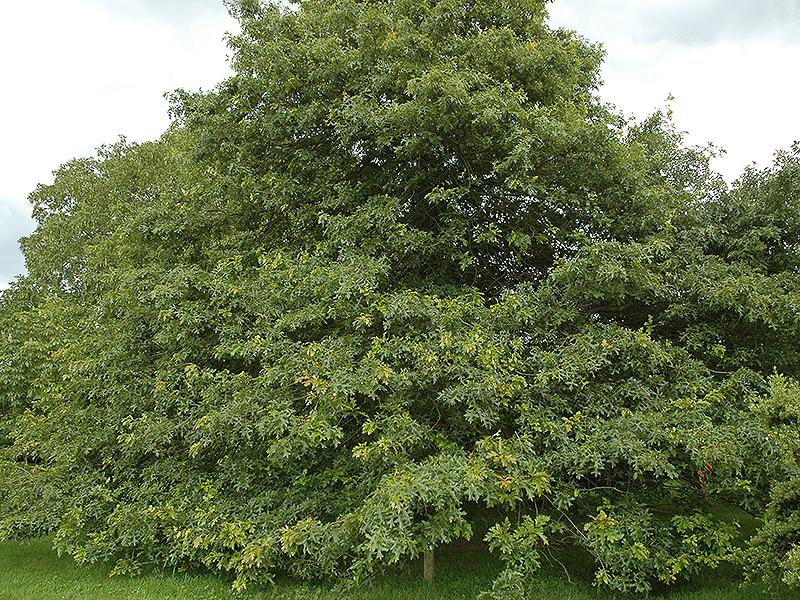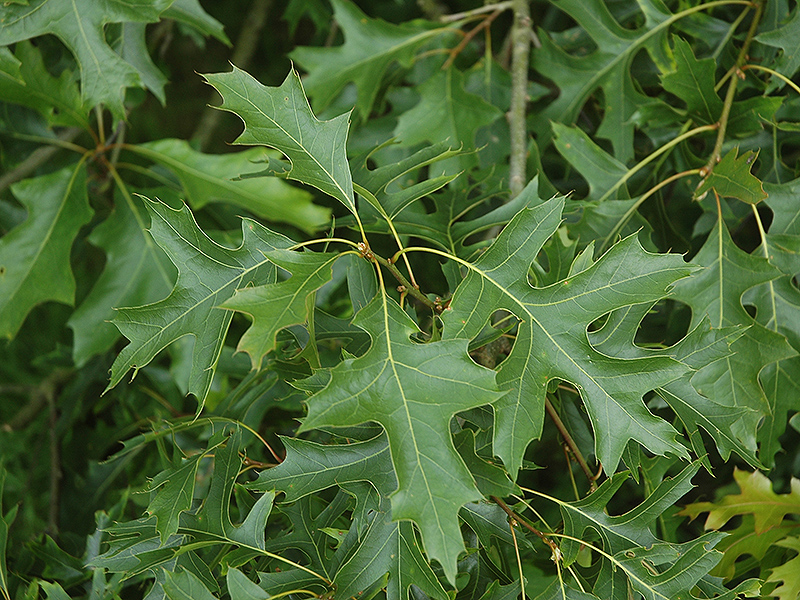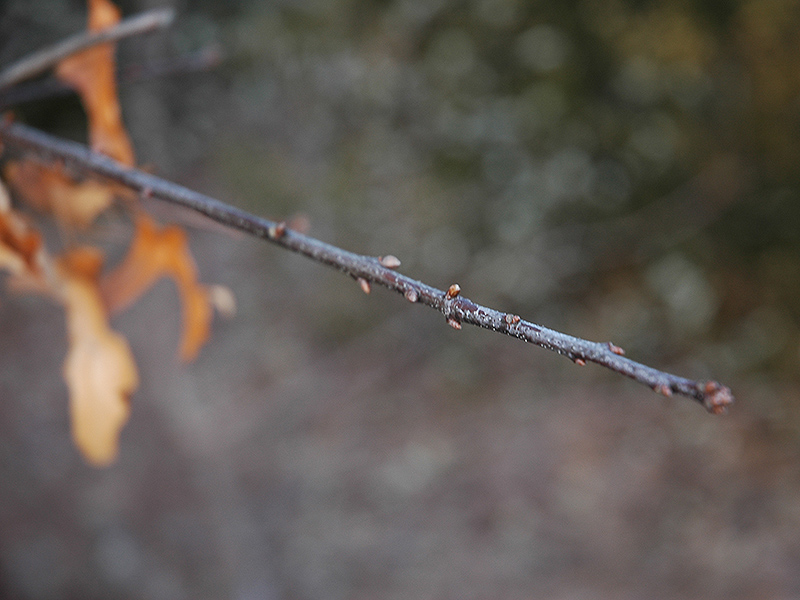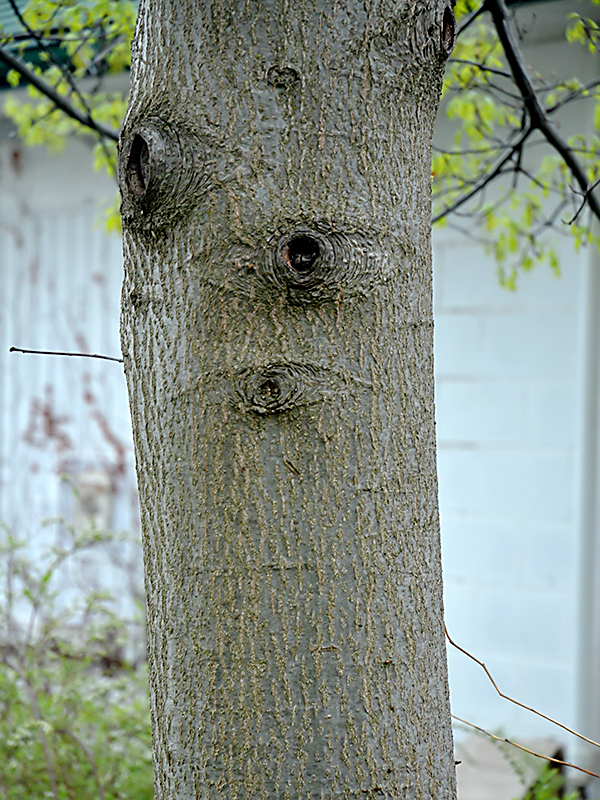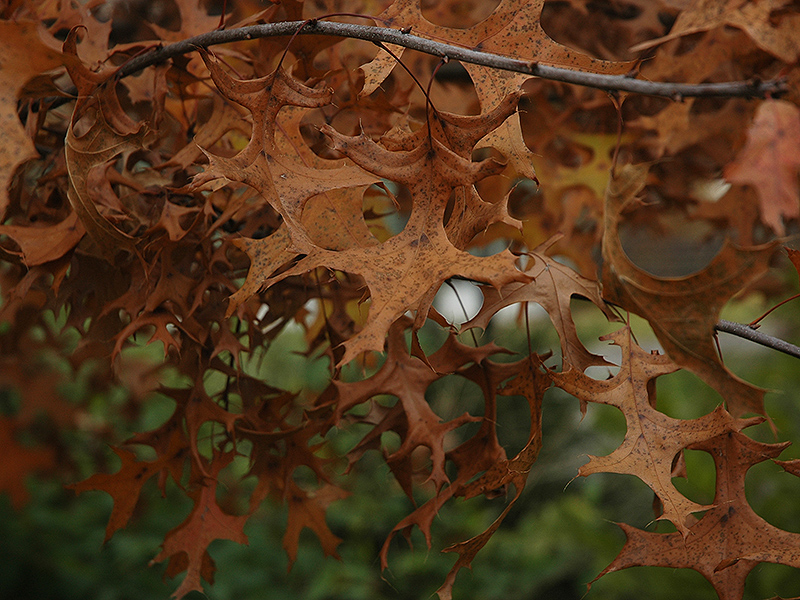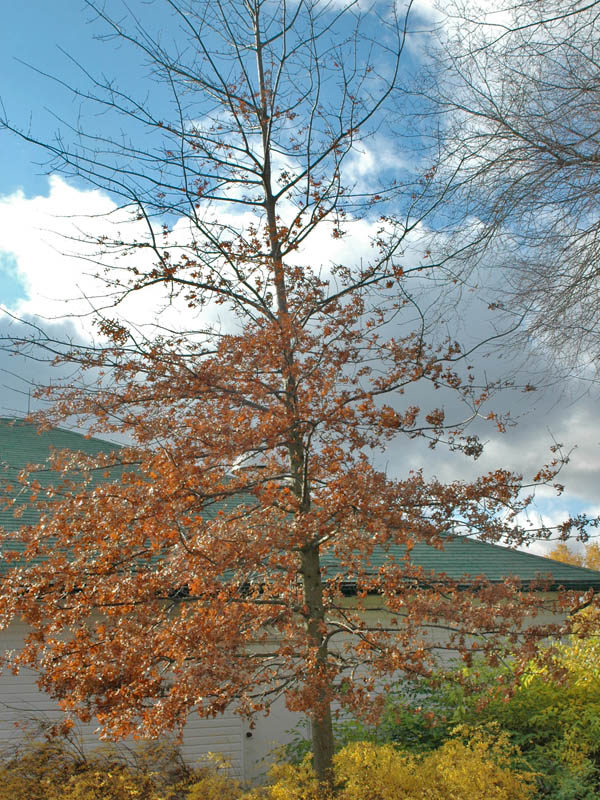| General Description | Has narrow lobes on leaves, light brown acorns with shallow caps, and a brilliant autumn leaf colour. This species has been placed on the IUCN Red List as least concern.
|
| ID Characteristic | Has a unique branching habit (pyramidal head with horizontal branches), fine textured leaves with thin narrow lobes. Branches radiate from the trunk at 90°.
|
| Shape | Pyramidal to broadly columnar. |
| Propagation | Seeded using acorns by stratifying them for 30-40 days, at 5° C, can be rooted by taking cuttings, and is grafted when producing cultivars. |
| Cultivation | Often transplanted because of shallow, fibrous roots. Tolerant of wet soil and sulfur dioxide, may have problems with chlorosis in urban settings, due to high pH.
|
| Pests | Susceptible to borers, canker, caterpillars, leaf gall, leaf miners, leaf rollers, leaf skeletonizers, leaf spot, powdery mildew, rust, scale insects, twig blight, wilt.
|
| Notable Specimens | Memorial Park, Windsor, Ontario, Canada. |
| Habitat | Wet areas, swamps, flood plains and lake plains with high water tables in the spring. |
| Bark/Stem Description | Grey-brown, thin, smooth and with age develops narrow, shallow ridges. |
| Flower/Leaf Bud Description | Imbricate, 25-50 mm long, ovate to conical, sharp-pointed, grey-brown to chestnut brown.
|
| Leaf Description | Alternate, simple, 7.5-16 cm long and may be as wide, terminal lobe long acuminate, 5–7 lobes, beneath the leaf it has axillary hairs.
|
| Flower Description | Appear in early April, when leaves not fully out; male flowers are in hairy catkins, 5-7.5 cm long, female flowers are tiny, hairy, and are solitary or in pairs on stem.
|
| Fruit Description | Acorn, solitary or clustered, 1 cm long, 1.5-2 cm wide, light brown, shallow cap with tight small scales, and matures in its second year. |
| Colour Description | Summer foliage lustrous dark green above and lighter green below, autumn foliage is red to red-brown or bronze. |
| Texture Description | Medium in leaf, medium-coarse in winter. |
